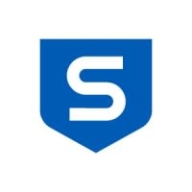


Sophos XG and Check Point Harmony SASE compete in the network security category, with Sophos XG appearing to have an upper hand in hardware-centric features and ease of use, while Check Point is noted for its advanced security and cloud-native approach.
Features: Sophos XG features synchronized security, intrusion prevention system, and a scalable web application firewall. It is known for its intuitive design and straightforward implementation, receiving praise for its ease of use and stability. Check Point Harmony SASE offers strong endpoint protection, Zero Trust Network Access, and support for hybrid work environments. It is appreciated for its security integrations and cloud-native approach, which although less hardware-focused than Sophos, is favored for its versatile deployment models.
Room for Improvement: Sophos XG could improve by optimizing user interface performance, enhancing SD-WAN capabilities, improving logging processes, and speeding up technical support responses, with some users finding initial setup and updates challenging. Check Point Harmony SASE's areas for improvement include more advanced reporting, real-time analytics integration, improved support services, and user interface updates to better user experience. Both solutions seek enhancements in scalability and reporting, with Check Point users desiring better compatibility and analytic capabilities.
Ease of Deployment and Customer Service: Sophos XG is considered easy to deploy on-premises and offers robust customer support, with efficient service noted in regional contexts and assistance from partners and distributors. Check Point Harmony SASE provides versatile deployment options across public, private, and hybrid clouds, but reviews on its customer service are mixed, often redirecting users to community resources before offering direct assistance.
Pricing and ROI: Sophos XG offers competitive pricing and flexible licensing, considered cost-effective compared to FortiGate and Cisco. It provides a comprehensive set of features in a single bundle and garners positive ROI feedback, though recent price hikes have raised some concerns. Check Point Harmony SASE demands higher upfront costs, aligning with its sophisticated security offerings, with a cost-benefit ratio appreciated particularly by larger organizations. While Sophos is praised for managing network security efficiently, Harmony SASE is valued for its long-term benefits despite its higher initial cost.
Clients are now comfortable and not wasting productive hours on IT support.
We have experienced a positive return on investment by utilizing Fortinet's products.
There's definitely an ROI. Having a centralized way of managing and applying policies across the entire organization always helps.
We are saving 40% of our time, which is good.
It's good, but I would still say it's higher by about 10-15 percent compared to other market products with similar configurations.
Having a Unified Threat Management system like Sophos XG has helped us spend less on network security, thus providing a good return on investment by managing our income effectively.
My customers see a return on investment and value for money with Sophos XG.
He explained that it required a command line configuration, as it couldn't be done through the graphical user interface.
I would rate their support for FortiGate a nine out of ten.
They offer very accurate solutions.
Users are reluctant to open support cases and would rather reinstall an appliance themselves than go through the support process.
I would rate the technical support a nine out of ten.
Microsoft's protection has received positive feedback and strong on-site support from both customers and partners.
They scale up really well from smaller models like the FortiGate 40 and 50 to bigger sites with the FortiGate 100 for more throughput - up to enterprise datacenters.
The variation comes in terms of the interfaces and throughputs, but from a security perspective, you get the same benefit, irrespective of whether you have an entry-level unit or an enterprise.
You can choose a cheaper model if you only have 20-30 users, but you will need to spend more money for a FortiGate solution that covers 5,000.
I would rate it nine out of ten for scalability.
You can scale up to multiple firewalls with centralized management.
You can't upgrade memory or storage on a specific model, which limits scalability.
The scalability of the solution is limited to three nodes and may not be sufficient for extensive scaling.
Improper handling of these can lead to a memory surge, a well-known bug that can cause the entire system to freeze.
It is less stable than Palo Alto Networks and Check Point firewalls because there are lots of bugs in the latest firmware.
We have not had any problems with the operating systems or maintenance of subscriptions.
There are some lags and glitches with connectivity, so I would rate the stability as between seven or eight out of ten.
After the last improvement, I can say it is much more stable now.
I would rate the stability of Sophos XG a ten out of ten.
Sophos XG is very stable, even when serving as a DHCP server.
Sophos XG is resource-greedy, affecting performance even on newer computers.
If I have put 10 GBPS of throughput on a firewall and I enable all of these features available, such as IPS or UTM functionalities, the throughput comes down to 1 GBPS.
By providing an integrated solution, users would have access to all features and functionalities within a single window, eliminating the need to navigate through multiple windows.
Investing in a solution that can accommodate such growth would be more cost-effective than repeatedly purchasing new hardware.
A local data center in Turkey would enhance the product, as currently, our Internet traffic goes to another country, which is problematic for us.
The connectivity issue can be improved as at times it lags when connecting to their server.
The solution should have the ability to be up to date with the most recent threats.
This suggests a vulnerability that needs addressing to ensure administrators can update patches without losing access.
Business cannot stop just because of issues with support.
Secure SD-WAN is free of charge.
The most expensive part is the renewal of the license subscription.
FortiGate is priced lower than Palo Alto.
Cost efficiency is a consideration, as SASE products are not the cheapest security products.
It is a bit expensive.
I would rate the pricing a ten out of ten as high.
The licensing cost in the final currency amount, is 163,080, with three years of support.
I rate the pricing a ten out of ten.
The firewall, IPS, and VPN functions are the most valuable features.
FortiGate provides solid protection against viruses, malware, and other threats.
Within the same dashboard, you get to see the security profiles, the type of traffic that's passing through, the top applications that are being consumed, etc.
The firewall management is the most valuable feature for me.
The best key features of Harmony are stabilization, private access, and Internet access.
This unique technology provides efficient branch connectivity without the need to invest in additional firewalls for each branch.
I particularly like the visibility it provides into network traffic, allowing us to identify and address issues efficiently.
The firewall feature of Sophos XG has been the most effective for threat prevention.



Fortinet FortiGate offers comprehensive network security and firewall protection across multiple locations. It effectively manages data traffic and secures environments with features like VPN, intrusion prevention, and UTM controls.
Organizations rely on Fortinet FortiGate for its robust integration with advanced security policies, ensuring significant protection for enterprises, cloud environments, and educational sectors. It facilitates network segmentation, application-level security, and authentication management, securing communication within and between locations such as branches and data centers. Its efficient SD-WAN and UTM features enable streamlined data management and enhanced threat protection capabilities. Users appreciate its centralized management, facilitating seamless operations across diverse environments.
What are the key features of Fortinet FortiGate?
What benefits should users expect from Fortinet FortiGate?
Fortinet FortiGate is crucial in sectors like education, offering robust networks for secure data flow between campuses and facilitating remote learning. In enterprise environments, it allows efficient management of application traffic and security across multiple branches, while in the cloud, it seamlessly integrates with diverse platforms to enhance security infrastructure.
Perimeter 81 is a cloud-based network security and software-defined perimeter (SDP) solution designed to provide secure access to resources in the cloud, data centers, and on-premises environments. It offers a unified platform for organizations to manage and secure their network infrastructure, regardless of the location or type of resources.
Perimeter 81 Benefits:
Perimeter 81 Features:
Reviews from Real Users
PeerSpot user, Frontend Developer at Limelight Networks, states that "We use some VPN solutions, and Perimeter 81 has the best user experience for desktop or mobile".
Daniel Goldfeld, Vice President of Customer Success at Mine - The All-in-One Privacy Suite, says that Perimeter 81 has "Great SAML and SCIM support with the ability to deploy site-2-site tunnels with specific IP restrictions".
Another PeerSpot user, Accounts Payable Specialist at Simera, writes that "The feature that I have found to be most valuable is the reputation that the company has regarding privacy. Nowadays, this is critical, especially when you do all of your work online."
Sophos XG is a versatile network security solution that offers network protection, firewall management, VPN access, web filtering, and intrusion prevention, providing comprehensive security for businesses from small offices to large enterprises.
Sophos XG stands out for its Synchronized Security, easy setup, and robust templates. It manages VPN access, protects against threats, and handles load balancing and traffic monitoring. The cloud-based management, centralized dashboard, and detailed logging make it user-friendly and reliable. Integration of features like email protection, SD-WAN, and unified threat management ensures a broad spectrum of security needs are covered. However, it could benefit from improvements in network security, user portals, technical support, and more scalable SD-WAN features.
What are the key features of Sophos XG?Sophos XG is implemented across industries such as healthcare, education, and finance to secure sensitive data and ensure regulatory compliance. It aids in endpoint protection, application control, load balancing, and traffic monitoring essential for these industries. Enhancing network security, simplifying VPN setup, and integrating adaptive security features remain focal points for businesses.
We monitor all Firewalls reviews to prevent fraudulent reviews and keep review quality high. We do not post reviews by company employees or direct competitors. We validate each review for authenticity via cross-reference with LinkedIn, and personal follow-up with the reviewer when necessary.